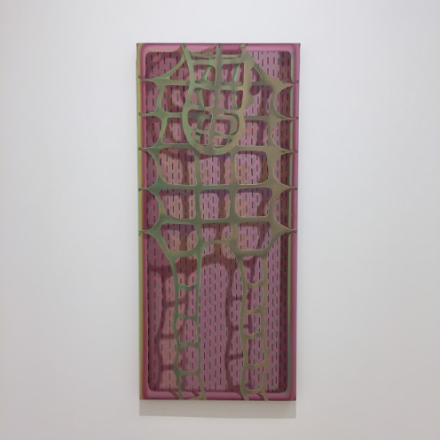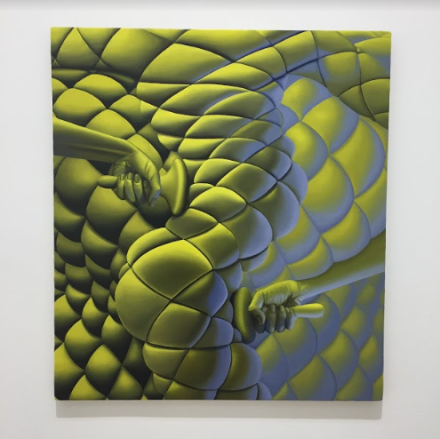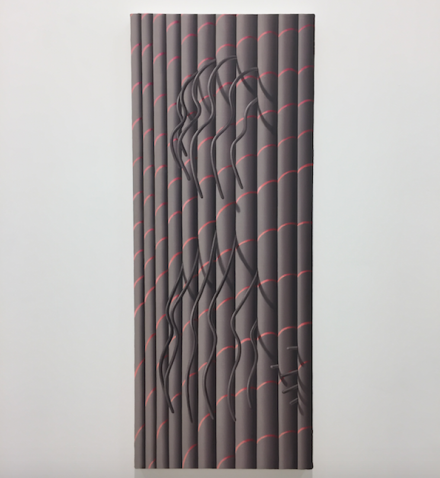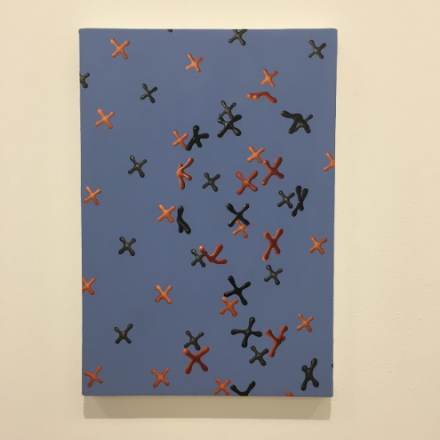
Sascha Braunig, Hide (2015), via Art Observed
Currently on view on the ground floor of MoMA PS1, painter Sascha Braunig has compiled a body of work from the past five years of her practice, showcasing the range and depth of the artist’s investigations into the painted canvas, and her investigations into the act of portraiture.  Working through a wide range of visual materials, Brauning’s swirling, twisting confrontations with the history portraiture, and modes of understanding the human form itself, open an intriguing dialogue with the Mark Leckey exhibition just upstairs, and underscore Brauning’s imaginative practice.

Sascha Braunig, Warm Leatherette (2015), via Art Observed
Showing a broad series of over 20 works throughout the gallery space, Braunig’s subdued exhibition offers an impressive visual payoff, changing in style and approach from work to work.  Her works swim in and out of attention to the human figure, often embellishing its form or twisting it into almost impossible arrangements.  One work, Hide, reduces the subject to a series of leathery strips, themselves stretched over an imagined canvas space that seems to constantly toy with the viewer’s awareness of the image as a painting.  Elsewhere, Brauning twists organic form and careful attention to line and figure into surrealist arrangements, often countering hulking masses of color with a momentary inflection of reality (hands, chains, and brushes swim throughout the works on view).  In others, the human form appears more explicitly, but is subjected to twisted subversions of space, that might make them the most jarring works on view.  Of particular note is, Lashes, where a sitter’s head gradually unwinds in strips, floating away from their figure in a manner that is both strikingly alluring and shocking in its deconstruction of the body.

Sascha Braunig, Bridle (2013), via Art Observed

Sascha Braunig, Pillar (2015), via Art Observed
This willingness towards a sudden destruction of the image’s consistency, or of the human form itself, carries throughout Braunig’s work more broadly.  Hers is a sense of the body as a distended, open site, one pushed to graphical extremes through a juxtaposition of imaging techniques that draw as much from digital imaging technologies as they do from the tradition of studied Western portraiture.  Even the non-figurative works on view owe something to expanded awarenesses of the body, from works that draw from the striated surfaces of muscles and ligaments, to the shapes and clusterings of blood cells and other microscopic particles.  In other words, Braunig’s paintings seem driven by their investment in new ways of seeing, broader and more intricate ways that render both cellular networks and the deep reaches of the galaxy as equal imagistic fodder.  Using these varied physical structures as a touchstone for her work, in conjunction with the human form, Braunig examines a human body expanded in a world perhaps broader in scope, and more importantly, in manners of mediation, than any earlier era.
The artist’s work is on view at MoMA PS1 through March 5th.

Sascha Braunig, Motes (2015), via Art Observed
— D. Creahan
Read more:
Sascha Braunig: Shivers [Exhibition Site]



